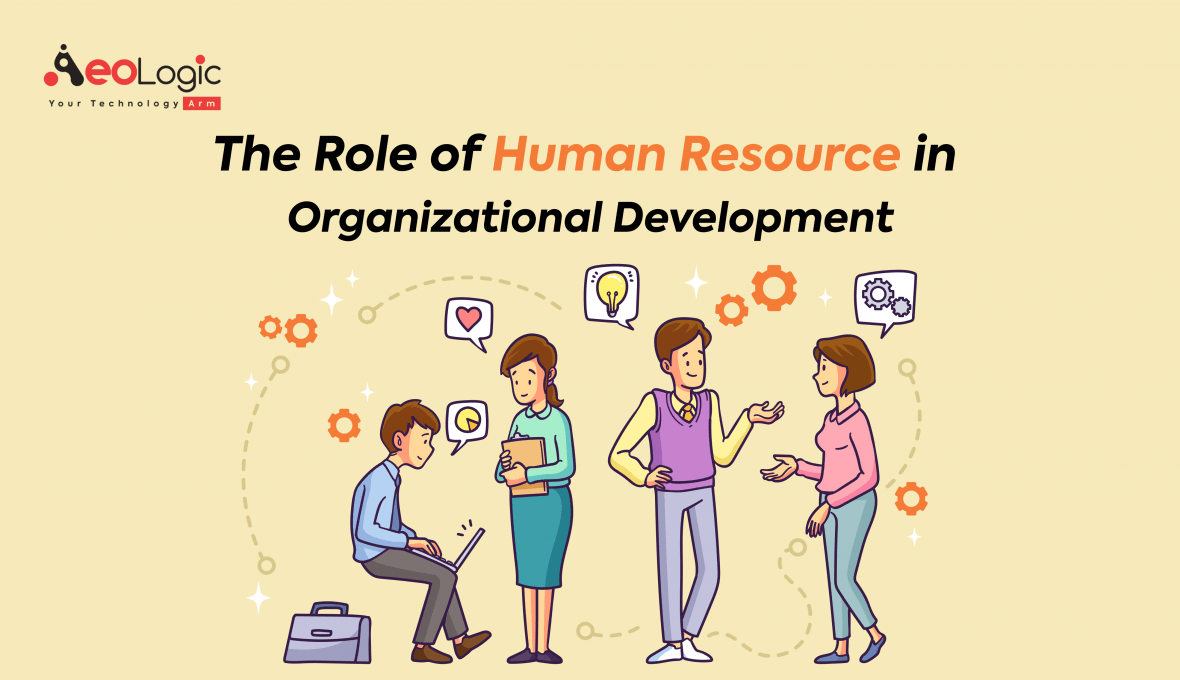In this fast paced era, with things transforming in every minute, it is demanding continuous realignment in order for surviving. The role of HR in organizational development is changing the way how a business works.
Same applies with the HR vertical. With the trending remote working setup came up challenge of handling a remote workforce. Being an HR will never be an easy job. Since, human resources tend to play a crucial role in business performance and employee experience, organization development can be said depending on HR department.
If performed in the correct manner, HR could be the gem in organizational development and innovation.
Also read: Human Resource Management Challenges and Solutions
What is Organizational Development?
OD or organisational development can be referred to as a strategy for revamping internal communication and relation.
Generally, the development entails transformation for the entity for improving effectiveness and productiveness of any effort put in. primary action under development. Such as training/ learning management, IT, culture, communication, and similar.
The entire purpose is to provide better operations and encourage positive outcomes at the base.
The Role of HR in Organizational Development
Considering timely developments at an enterprise will help in equiping people with better resources for upcoming challenges and talent needs. It facilitates in fostering better relationships and a healthy and positive work culture.
The role of HR in organizational development also gets your attention towards measures like branding and structure. Such dedicated tasks can be highly worthwhile when it comes to making the mark on today’s date.
So, how could a human resource department contribute to an organizational transformation (or say development)?
12 Techniques For Promoting Organizational Development in Your Company
Regardless of its distinction from conventional HR practices, the area of organizational development is still technical, and therefore, too are its interventions. Organizational development interventions, also known as OD techniques, are persistently increasing and accommodating to suit contemporary business demands. The requirement of certain techniques over others are depending hugely on the makeup of each and every individual company. However, having a overall overview of the distinguished types of intervention is yet critical. If you are seeking to encourage organizational development within your company culture.
Human Process Interventions
These interventions are the transformation processes that associate to interpersonal relations, as well as group and organizational mechanics.
Individual Intervention
This tends to concern with the individual, generally aimed at enhancing communication with others. In this process, the individual is trained on their persisting behavior patterns that are deemed to be counter-productive to interpersonal communication.
Group Intervention
These are targeted towards the content, process, or infrastructure of a group. The process relates to the group’s internal exercises. Therefore, the content is referring to what the team is working on, and the composition relates to the continual methods being utilized to reach tasks and understanding the external issues.
Third-Party Intervention
This kind of involvement is oftentimes used when conflicts spring up. Not all conflicts are built-in bad, however, there do live those that ought to be resolved quickly. In order to avoid extreme disruption. A third-party involvement, generally appointing an organizational development consultant, aids in controlling and resolving the conflict with efficiency.
Team Building
This is one of the better-known organizational development approach. It relates to a range of group activities that tends to allow teams in improving upon the entire team dynamics. For instance, the way they achieve duties and tasks.
Organizational Confrontation Meeting
This type of involvement is objected at identifying problems, keeping priorities and setting action objectives. And therefore, starting work on the recognized issues on an organization-wide scale.
Intergroup Relations Interventions
These intent at identifying, diagnosing, and comprehending intergroup relations. Like organizational confrontation meetings, issues and conflicts are recognized, priorities and action goals are highly set beyond deadlines, and work starts on the identified problems.
Large-Group Interventions
These interventions are aiming to get several organization employees and major stakeholders together for managing individuals into teams. The objectives of these large-group interventions are to recognize and solve company related issues. In order to build new strategies for structuring and coming through the organization. Or for promoting future directions for the business. Usually, these interventions are also known as “open space meetings”, “future searches” or “world cafes”.
Organizational/Structural Design
The answer to how an company functions lies in its functional area. The traditional hierarchal organizational chart is an illustration of a functional composition. Others can consider divisional, process, matrix, customer-centric, and network structure. The major pattern in this organizational development technique are reengineering and readapting the organizational structure. This implies re imagining the manner in which task is executed. Sufficiently handling the organization for shift, and then reconstructing the organization around the new processes.
Total Quality Management
It is also known as constant process betterment, total quality management arise from a manufacturing importance on quality control. This technique helps in representing a long-term effort. That too, for orienting all organization activities around the concept of quality.
Work Design
All work is achieved with the objective of accomplishing some sort of outcome. Jobs and their descriptions can be lined up to train themselves towards the most efficient way of achieving that outcome. Or, as an alternative, the necessity and contentment of the employee can be put front and center. Calculating on the selected approach, the role of HR in organizational development skills are needed. However, any structure of work that drives toward optimum productivity is called work design.
Job Enrichment
This can be taken as a sub-component of work structure. The objective of job enrichment is for building a job that is interesting and difficult for the individual doing it. A few factors considered can include task identity, autonomy, skill variety, and employee feedback.
Also read: The Role of Human Resources in Business Continuity Planning
Final Thoughts
The role of HR in organizational development has the potential to drastically enhance companies processes and the well-being of their employees. In today’s contemporary business market, a company ready and inclined to represent change wherever and whenever necessary. For respond to requirements, or to make better their chances of long-term success, are those organizations that will certainly sustain development and success. Each and every organization should look to create an effective employee experience that helps in attracting, retaining, and promoting the right talent. And that initiates when you have an impressive integrated approach to HR and OD practices.
Connect with us to learn more about HR practices in organizations.







